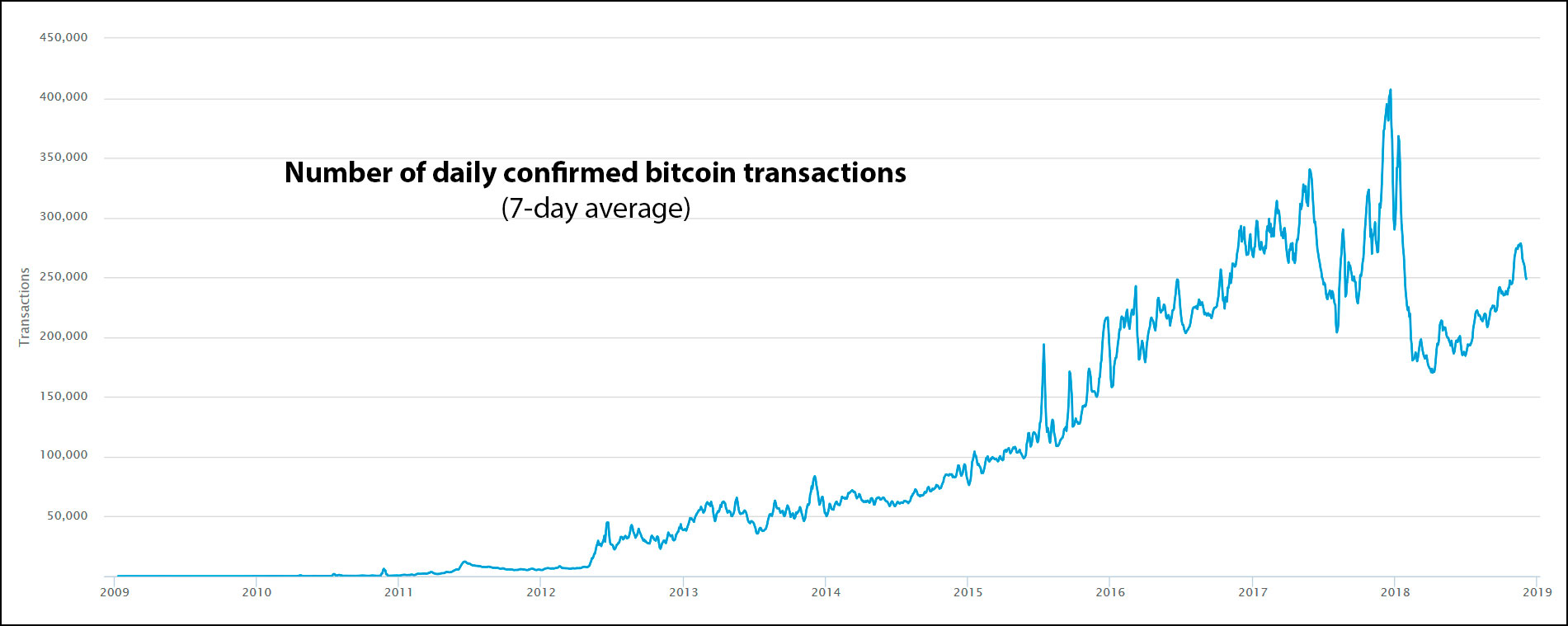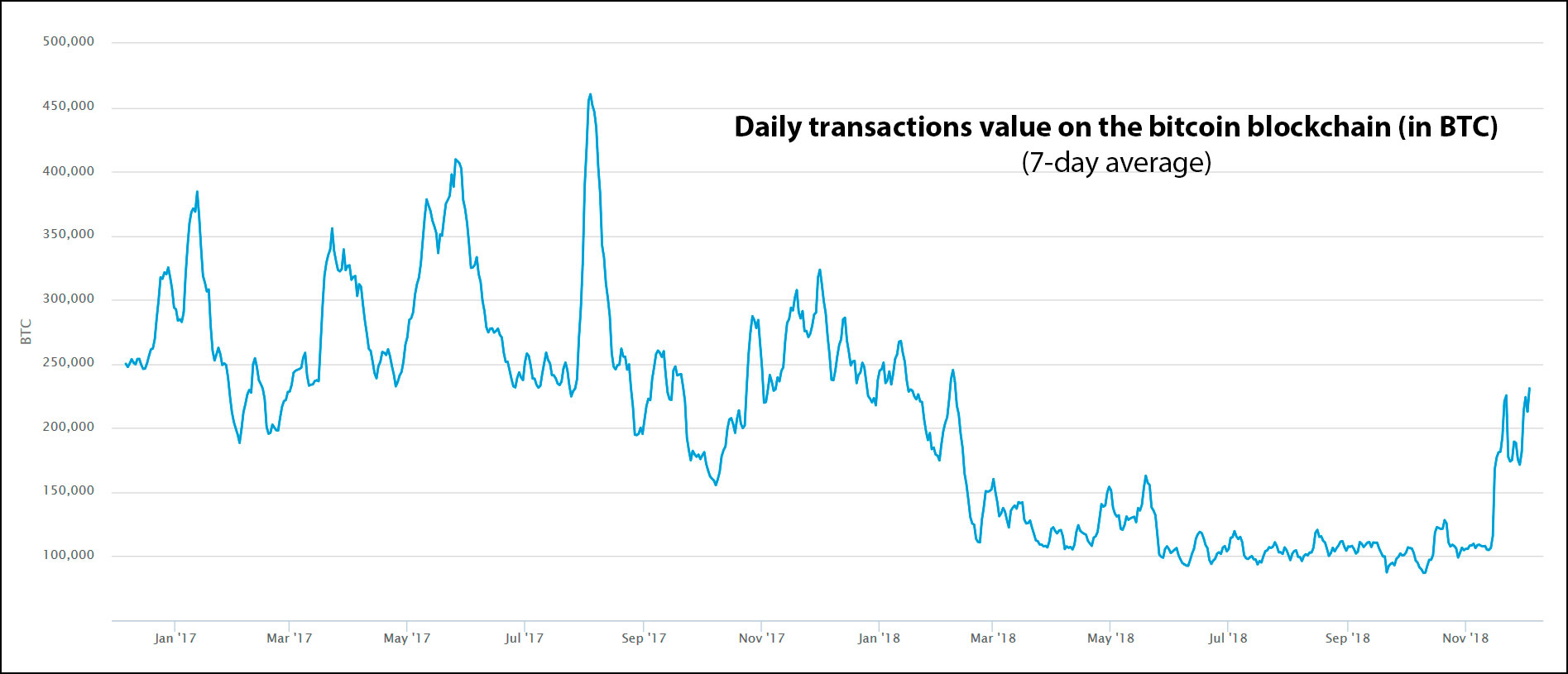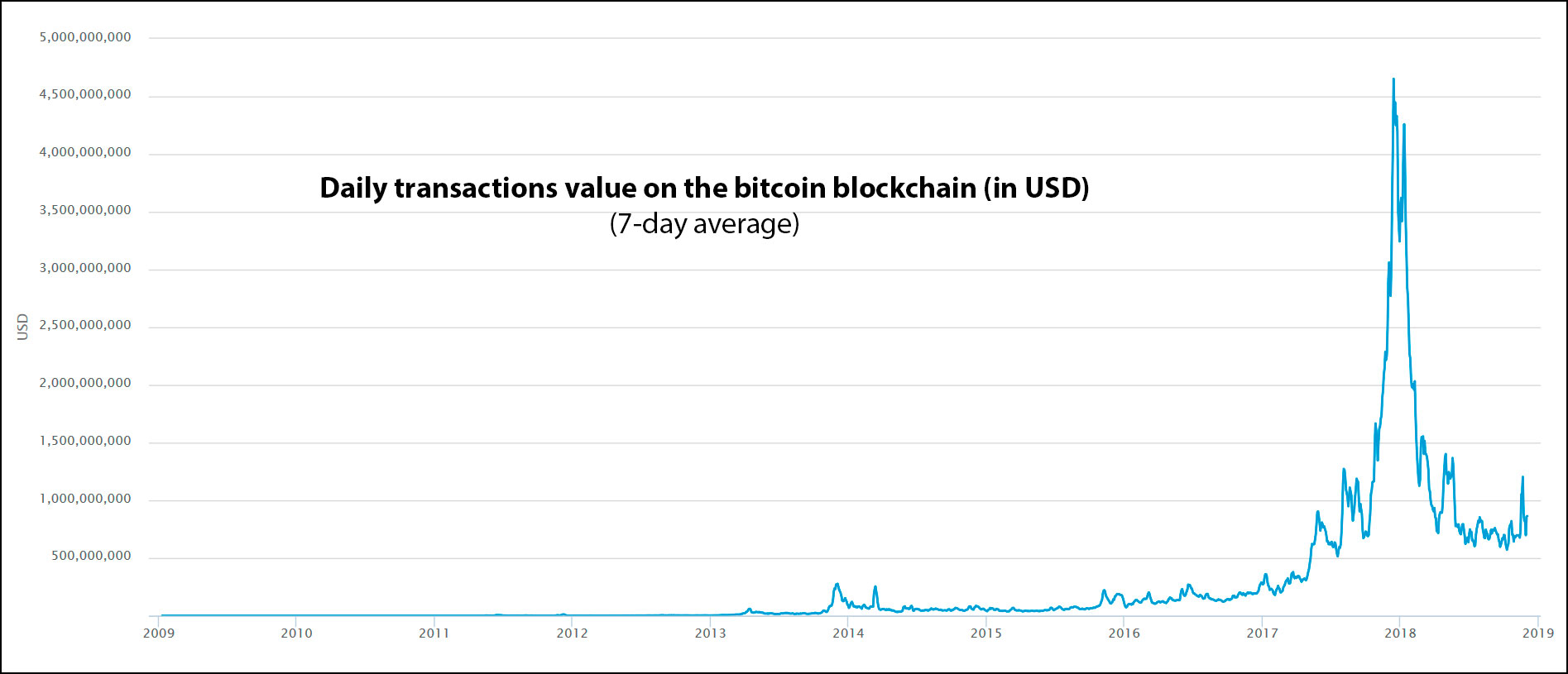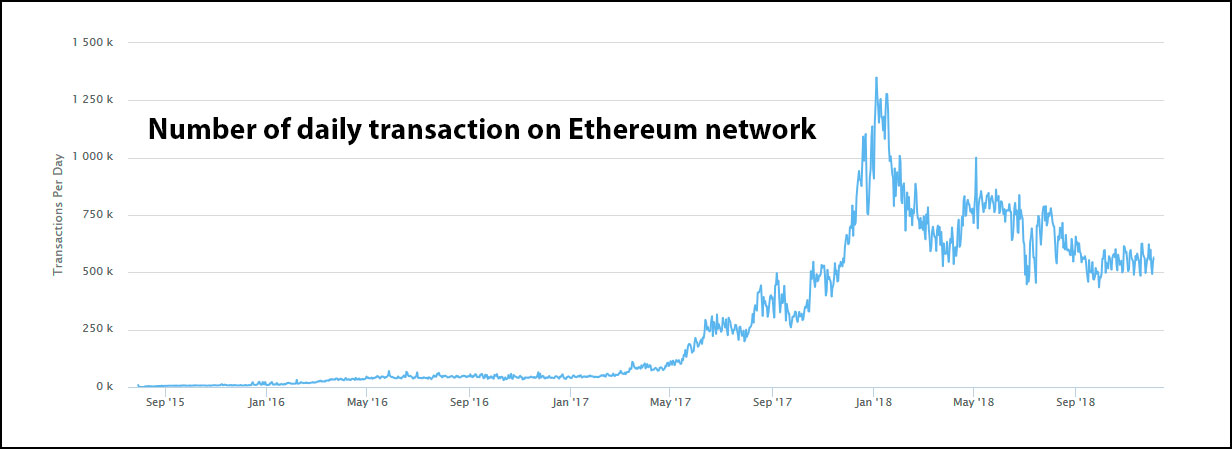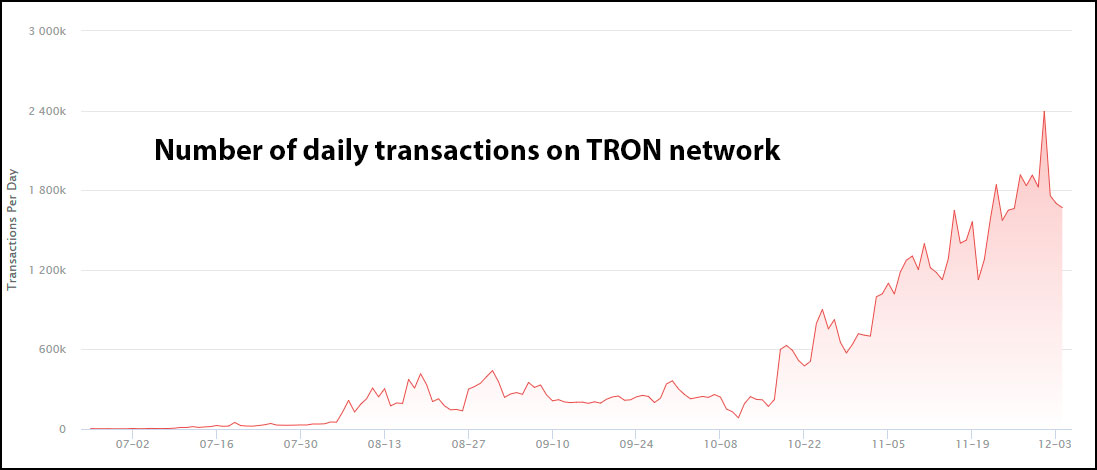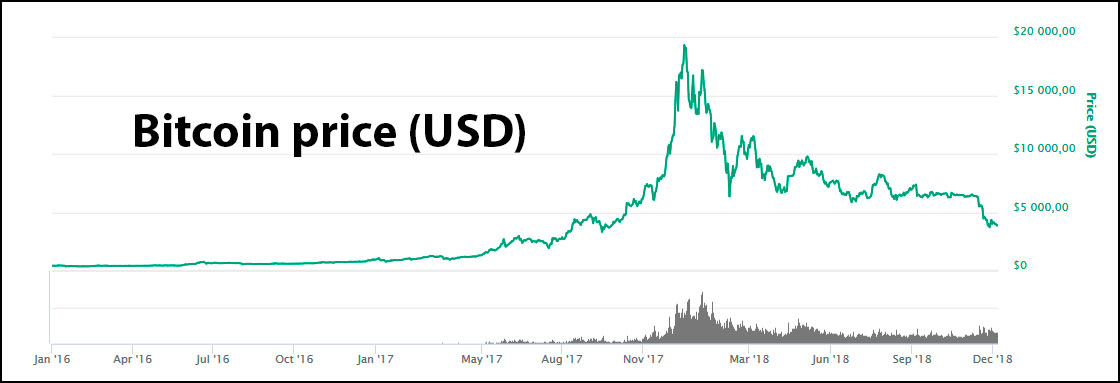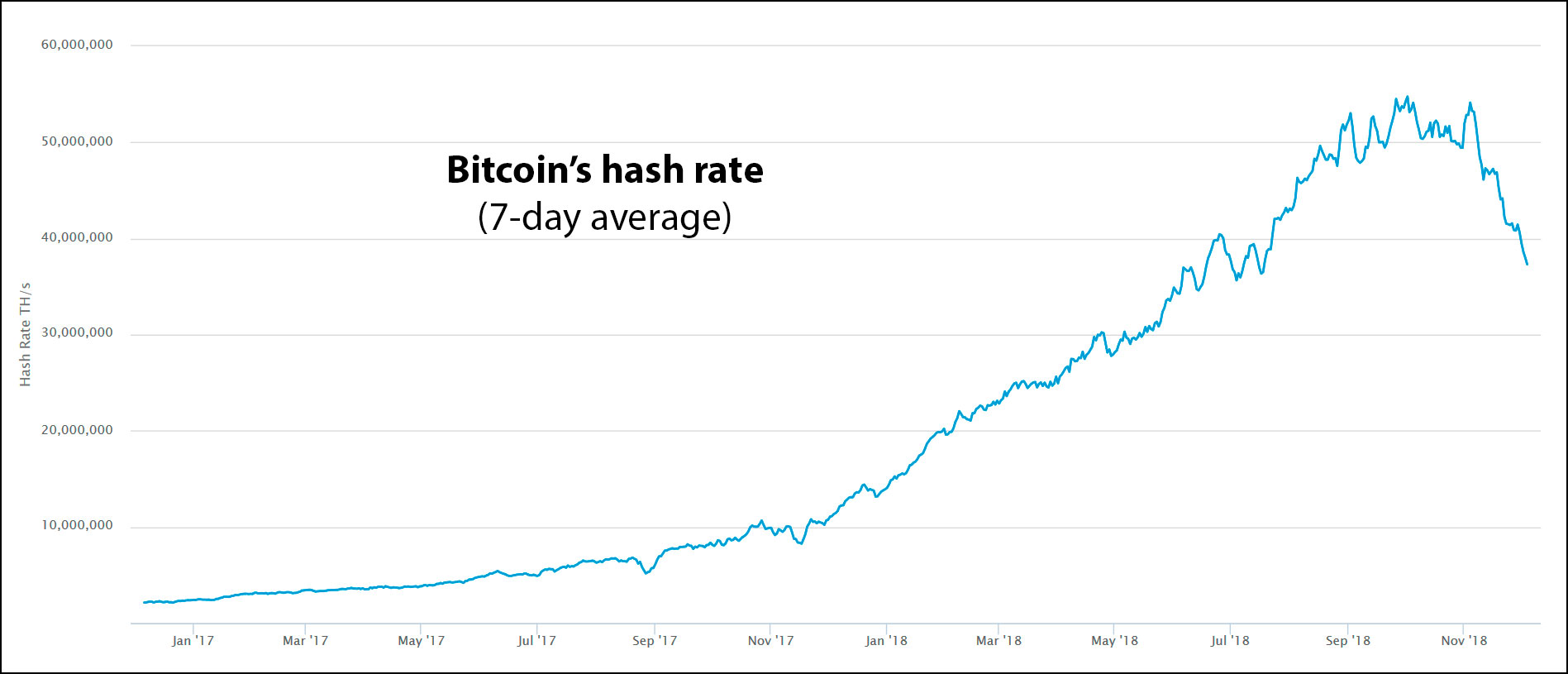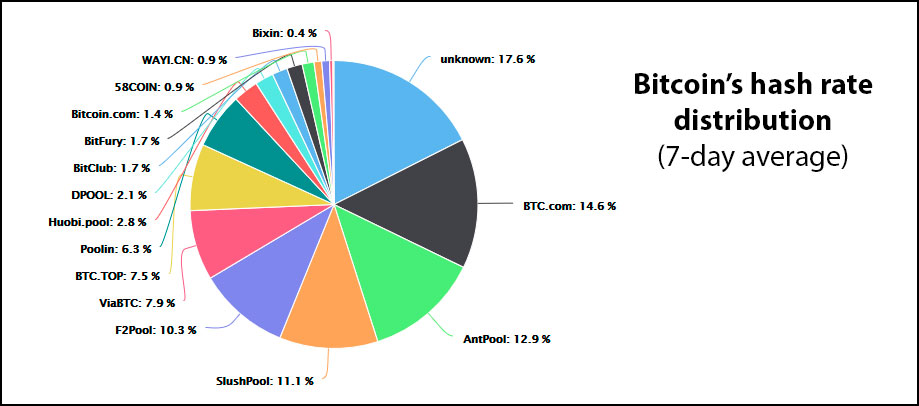Statistics and analysis for cryptocurrency markets, bitcoin price and dominance, adoption of blockchain technologies, lightning network development, etc.

Search terms
– The popularity of search term “bitcoin” is at 9% level from its all-time high in December 17, 2017 – December 23, 2017.
– Popularity of search term “cryptocurrency” is at 7% level from its all-time high in December 31, 2017 – January 13, 2018.
– Popularity of search term “blockchain” is at 24% level from its all-time high in December 17, 2017 – December 23, 2017.
Bitcoin network
– Number of daily bitcoin transactions is 248,708, which is ~39% lower from its all-time high of 407,127 on December 20, 2017 (7-day average stats are used, source)
– Value of daily bitcoin transactions is 230,917 BTC, which is ~50% lower from its all-time high of 460,357 on August 4, 2017 (7-day average stats are used, source)
– Value of daily bitcoin transactions is $936.1 million, which is ~80% lower from its all-time high of $4.65 billion on December 14, 2017 (7-day average stats are used, source)
Ethereum, NEO and TRON networks
– Number of daily transactions on Ethereum network is 565,202, which is ~58% lower from its all-time high of 1,349,890 on January 4, 2017 (source)
– Number of monthly transactions on NEO network in October 2018 was 1,143,931, which is ~43% lower from its all-time high of 2,001,513 in May, 2018 (source)
– Number of daily transactions on TRON network is 1,668,872, which is ~58% lower from its all-time high of 2,393,997 on Deceber 1, 2018 (source)
Markets
– Bitcoin price was $3,884 as of 15:00 PM CET, which is:
– 80.7% lower from its peak of $20,089 on December 17, 2017;
– 40% lower than $6,452 a month ago on November 5, 2018.
– Bitcoin dominance was 54% as of 15:00 PM CET, which is 21.58% higher from its all-time low of 32.42% on January 14, 2018.
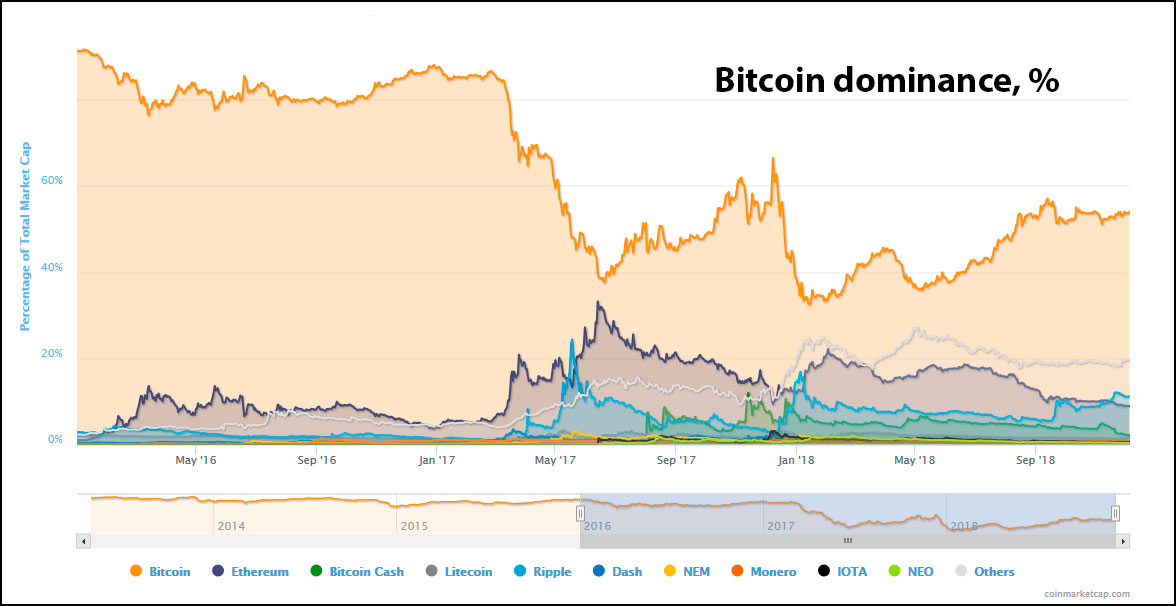 * Low bitcoin dominance may indicate high investors’ sentiment toward cryptocurrency markets. Historically, the largest upward movements of crypto markets have been happening while bitcoin dominance was decreasing.
* Low bitcoin dominance may indicate high investors’ sentiment toward cryptocurrency markets. Historically, the largest upward movements of crypto markets have been happening while bitcoin dominance was decreasing.
– Bitcoin NVT ratio is 124, which is higher than historical average levels between 25 and 100 (source)
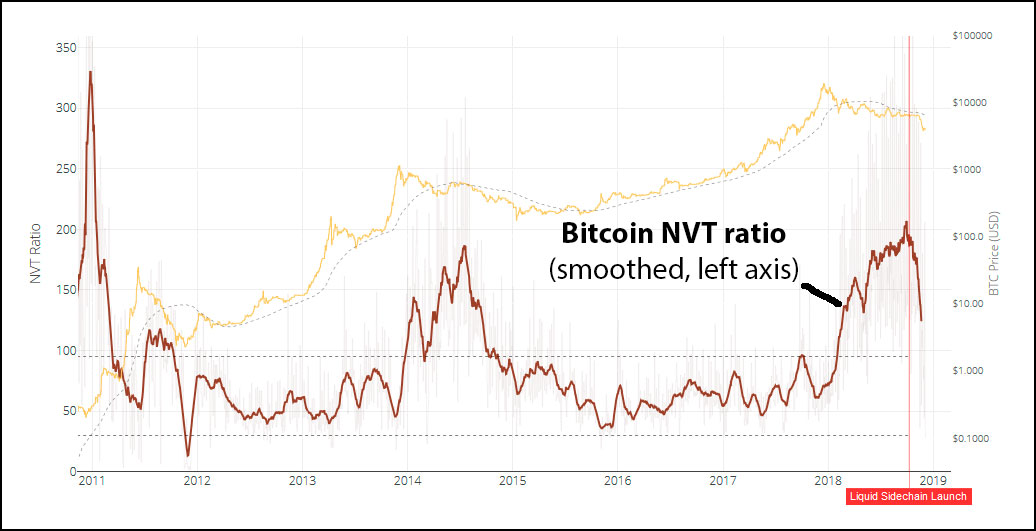 * Bitcoin’s NVT ratio (Network Value to Transactions) is calculated by dividing the market capitalization by the the daily USD volume transmitted through the blockchain. That this is the equivalent of total BTC supply divided by the daily BTC value transmitted through the blockchain.
* Bitcoin’s NVT ratio (Network Value to Transactions) is calculated by dividing the market capitalization by the the daily USD volume transmitted through the blockchain. That this is the equivalent of total BTC supply divided by the daily BTC value transmitted through the blockchain.
* High NVT ratio may indicate that cryptocurrency is valuated too expensive (high market cap) comparing to its utility value (daily volume of BTC transmitted through the blockchain).
* NVT ratio was invented by Willy Woo, data for its calculation is taken from blockchain.com.
Bitcoin mining
– Bitcoin’s hash rate is 37,314,155 TH/s, which is 229% higher than 11,344,904 TH/s a year ago (7-day average stats are used, source)
– Bitcoin’s hash rate distribution among the largest mining pools (source):
BTC.com – 14.6%;
AntPool – 12.9%;
SlushPool – 11.1%;
F2Pool – 10.3%;
ViaBTC – 7,9%;
BTC.TOP – 7.5%;
others – 35,7%.
Lightning Network
Bitcoin’s Lightning Network has (source):
– 3,623 nodes;
– 12,619 channels, which is ~38.1% more than month ago;
– cumulative capacity of ~452 BTC (~ $1,750,000), which is ~321% more than month ago.
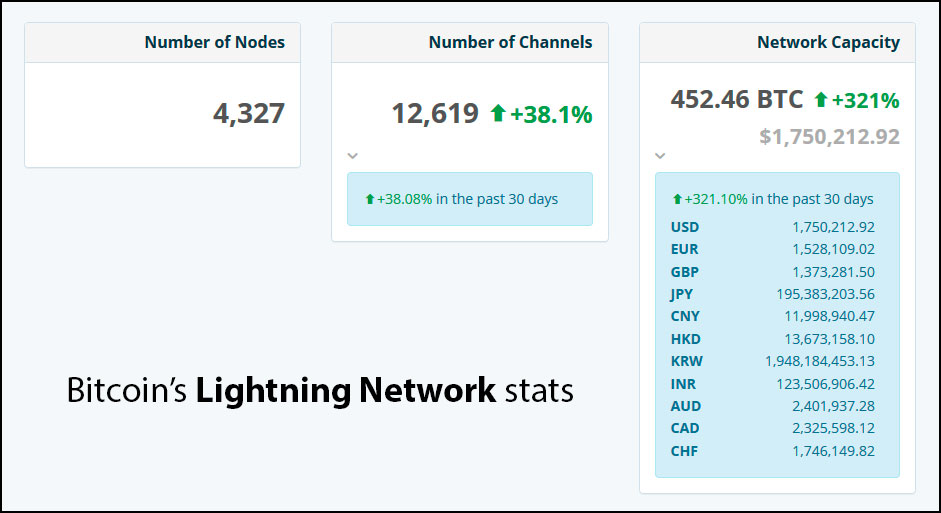 * Lightning Network acts as a “second layer” to a blockchain, allowing for faster transactions with very little transaction fees. The network works by creating “channels” between nodes.
* Lightning Network acts as a “second layer” to a blockchain, allowing for faster transactions with very little transaction fees. The network works by creating “channels” between nodes.
* Any two nodes on the Lightning Network deposit a certain amount of their coins on a common multi-signature wallet. This wallet acts like a balance sheet, which stores the info about how many coins belong to each party. This wallet is essentially a payment channel, which is registered on the blockchain.
* Now, using this payment channel, parties can make as many transactions between each other as they want without need to register every transaction on the blockchain. Each such transaction will only change the balance of coins deposited on multi-sig wallet. When two nodes finally close the channel, the resulted transaction (final balance of coins) is broadcasted to the blockchain as one transaction. This allows the two parties to carry out swift transactions with low fees, as their transactions don’t have to wait for miner confirmations every time.
* This doesn’t mean that you need to create a channel every time you want to transact with someone. You can use existing channels of the people you are connected with.
But there is a catch. For the transaction to go through, everyone involved in the transaction will have to be online. This includes you, the person you are sending the money to, and, if you are using someone else’s channel, then they have to be online as well.
* In addition, the payment channel — you are making the transaction through — should have enough funds to support your transaction, that is, twice the amount of the transaction value.
Lightning Network description is partly taken from TNW
Sources
Data used from the following sources: Woobull, Blockchain.com, BTC.com, Google Trends



